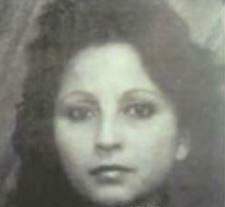Forensic anthropology and archaeology isn’t all it’s cracked up to be in popular culture. There isn’t usually a huge lab with all the best equipment and the ability to tell sex, ancestry or age at the quick glance of a stapes.

The lab at the Jeffersonian on Bones.
However, what the TV does get right is the ultimate pay-off of these forensic investigations: justice and closure.
In modern forensic contexts, archaeologists are usually under a time-crunch. They twist into yoga-like positions to carefully excavate the remains of the individual. They keep digging, whether or not it’s raining or 103 degrees. Then, the forensic anthropologist analyzes the remains, also with a time-sensitive awareness, and tries to make an identification, sometimes sending teeth or other DNA-containing matter to the FBI for testing.
It hasn’t always been this way. Before these current forensic techniques were developed, many individuals went unidentified.
That’s exactly what happened to Kristyne Olivia Trejo, a mother of two from Santa Ana, California, whose remains were interred in San Bernardino in 1989, almost a year after her disappearance.
The last time they saw their mother, Tina Marie Costa was 5 years old and her brother Andrew Trejo was 10 years old. In this emotional video from NBC Los Angeles, the pair speaks out about this experience.
“It’s been hard for me waiting for all these years, hoping that one day I’d get home and just see her there. There was an empty part of me that only she could fill.” -Trejo
After 28 years of wondering what happened to her, most of their questions have been answered. A sample from Kristyne Trejo’s remains was taken about a decade ago for modern DNA testing. It was matched when those with missing family members were invited to sumbit their own DNA samples at the Orange County Sheriff Department’s “ID the Missing” event in October 2015.
“At least, we can lay her down to rest — that’s my closure.” -Costa
The overall sentiment is the relief of knowing what happened to their mother and having her returned to the family to be given a proper burial. Though the question of who committed this act against Kristyne Trejo may never be answered, the family feels reassured she is watching over them.
This is the power of forensic anthropology. This is the pay-off. As long as there are murderers, there will always be cases like this. But as long as there are forensic anthropologists, there will always be grief-stricken families given the right to mend.

